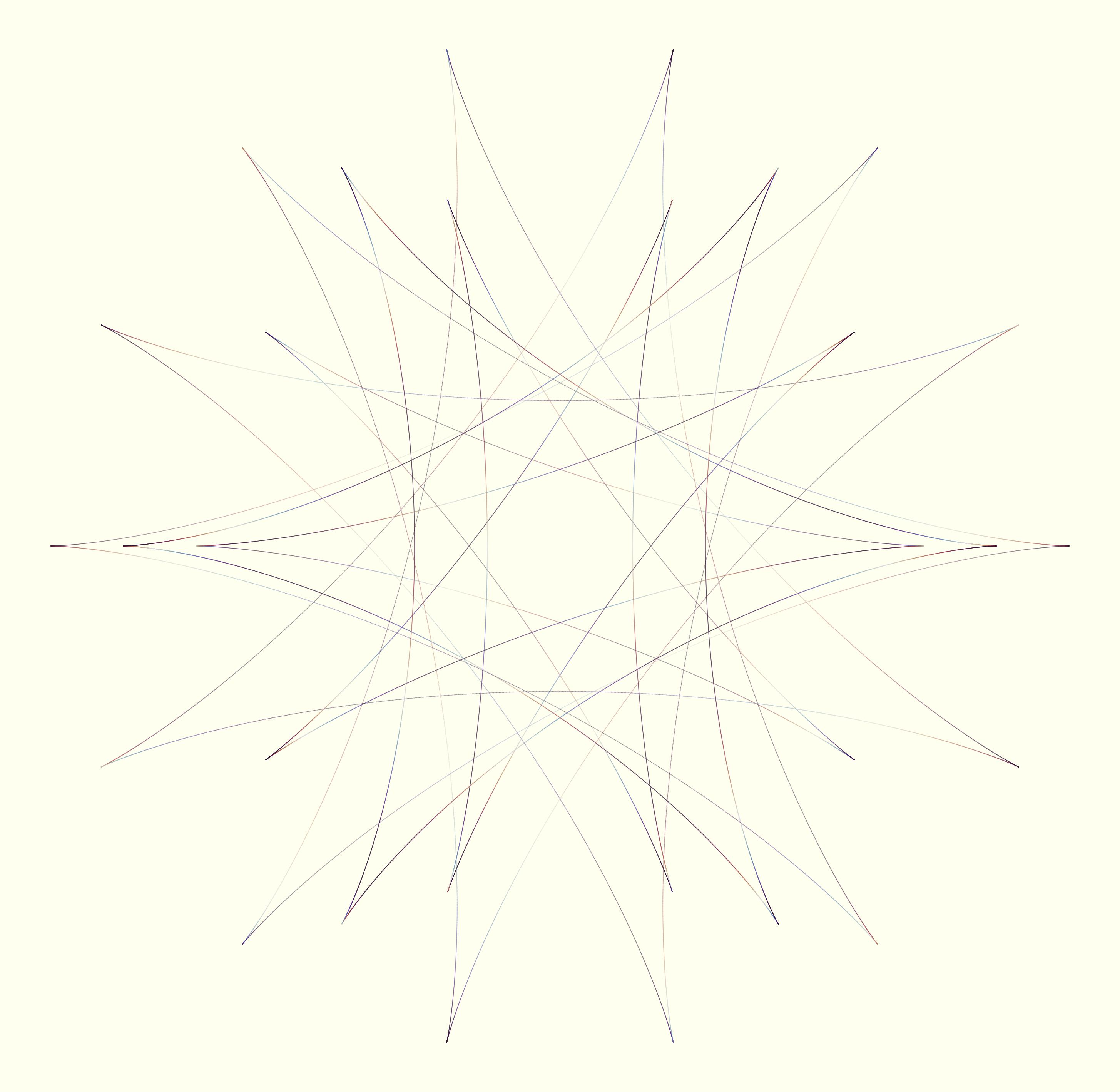Hypocycloid Motion
2025

Overview
This image visualizes the rolling motion of a circle inside another, creating what is known as a hypocycloid. I used three different radii pairs, such as (5, 3), (6, 4), and (7, 2.5), to control how the small circle rotates within the larger one. By plotting each curve over 20,000 points spaced evenly from 0 to 2π times the outer radius, the precision of the pattern stays clean and sharply layered.
Each point’s position follows parametric equations where:
x = (R − r) × cos(θ) + r × cos((k − 1)θ)
y = (R − r) × sin(θ) − r × sin((k − 1)θ)
Here, k = R / r defines the ratio of the outer to inner radius and governs the number of cusps and the spacing of the loops.
The subtraction and additional cosine terms inside the cosine and sine functions introduce a rhythmic interference
that leads to the folding of the curves inward.
To give the design its glowing and smooth appearance, I repeated scatter plots with alpha values from 0.02 to 0.12 and added a mirrored version of the same pattern by reflecting the coordinates across the origin. Color intensity was modulated using the function (sin(2θ + π/3) + 1) / 2 to create natural gradients through periodic variation. The result is a layered harmonic motion that flows outward in crisp petals.